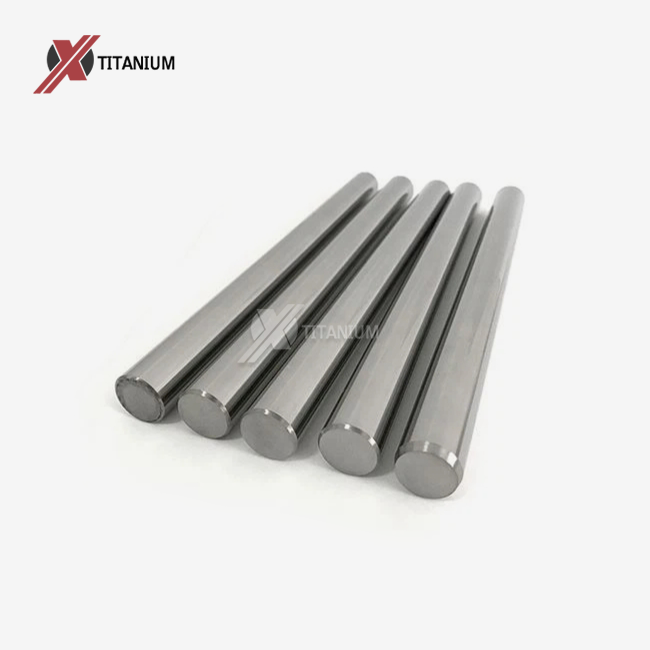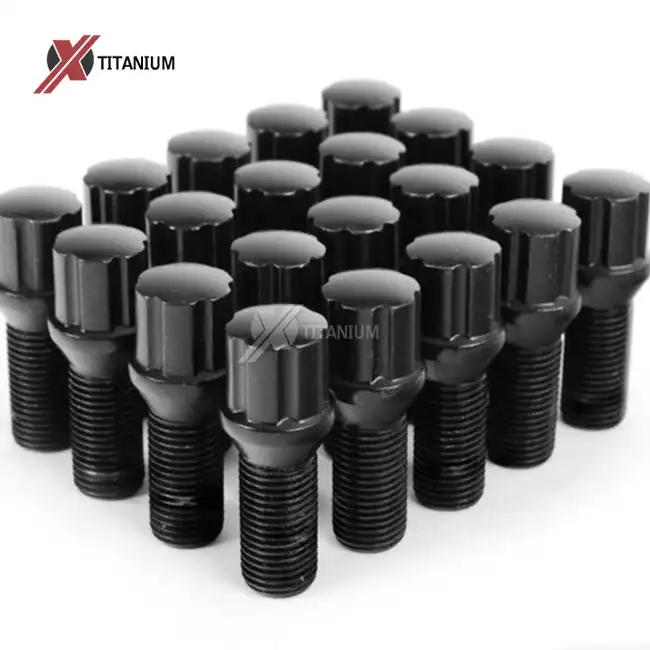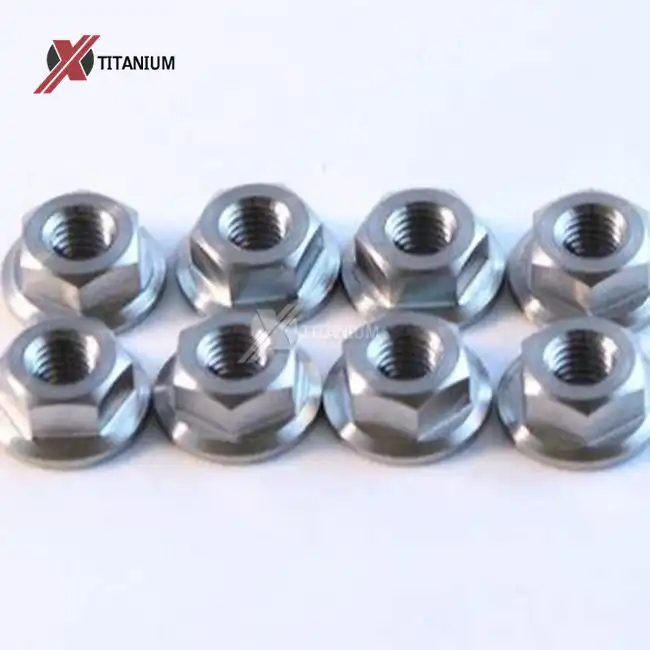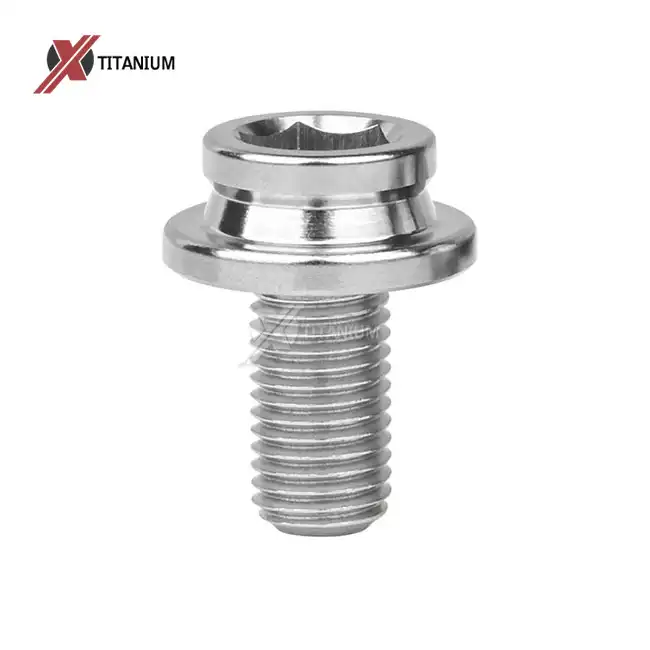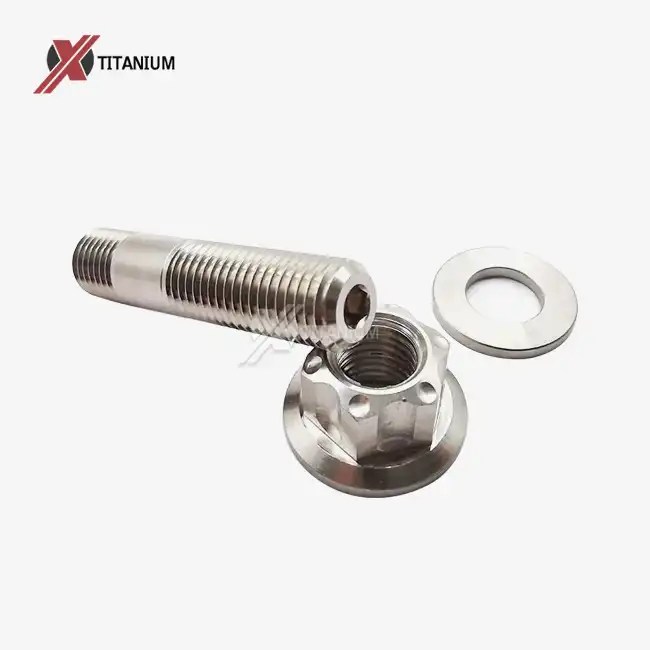Mechanical Finishing Techniques for Titanium Round Rods
Polishing: Achieving a Mirror-Like Finish
Polishing is a popular mechanical finishing technique for titanium round rods, prized for its ability to create a smooth, reflective surface. This process involves using progressively finer abrasives to remove microscopic imperfections from the rod's surface. The result is a mirror-like finish that not only enhances the aesthetic appeal of the titanium round rod but also improves its corrosion resistance by eliminating surface irregularities where corrosive agents could potentially accumulate.
The polishing process typically begins with coarser abrasives to remove any major surface imperfections, gradually transitioning to finer grits for the final polish. Advanced polishing techniques may incorporate specialized compounds or electropolishing methods to achieve an ultra-smooth finish. This level of surface refinement is particularly beneficial in applications where hygiene is crucial, such as medical implants or food processing equipment, as the smooth surface inhibits bacterial growth and facilitates easy cleaning.
Sandblasting: Creating a Matte, Textured Surface
Sandblasting offers a contrasting approach to surface treatment for titanium round rods. This technique propels abrasive particles at high velocity against the rod's surface, creating a uniform, matte finish. The resulting textured surface not only provides a distinct aesthetic but also offers practical benefits in certain applications.
The sandblasting process can be customized by adjusting factors such as abrasive type, particle size, air pressure, and exposure time. These variables allow manufacturers to achieve a range of surface textures, from a fine, satin-like finish to a more aggressive, roughened surface. Sandblasted titanium round rods often exhibit improved paint adhesion, making this treatment ideal for rods that will undergo subsequent coating processes. Additionally, the textured surface can enhance grip in applications where the rod serves as a handle or tool component.
Chemical Surface Treatments for Titanium Round Rods
Pickling: Removing Surface Contaminants
Pickling is a critical chemical surface treatment for titanium round rods, primarily used to remove surface contaminants and oxide layers. This process involves immersing the rods in a carefully formulated acid solution, typically a mixture of hydrofluoric and nitric acids. The acid bath effectively dissolves surface impurities, revealing a clean, uniform titanium surface beneath.
The pickling process is particularly important for titanium round rods that have undergone heat treatment or welding, as these processes can lead to the formation of undesirable oxide layers. By removing these layers, pickling restores the rod's corrosion resistance and prepares the surface for subsequent treatments or coatings. The duration and concentration of the acid bath must be precisely controlled to ensure effective cleaning without compromising the rod's dimensional integrity or mechanical properties.
Acid Cleaning: Enhancing Surface Purity
Acid cleaning is another chemical treatment method used to purify the surface of titanium round rods. While similar to pickling in its use of acid solutions, acid cleaning typically employs milder acids and is used for less aggressive surface preparation. This process is effective in removing light oxidation, organic contaminants, and other surface impurities that may accumulate during manufacturing or handling.
The acid cleaning process can be tailored to specific requirements by adjusting the acid type, concentration, and exposure time. Common acids used include hydrochloric acid, sulfuric acid, or proprietary blends designed for titanium. After acid cleaning, titanium round rods often undergo a thorough rinsing process to neutralize any residual acid and prevent potential contamination in subsequent applications. This treatment is particularly valuable in industries with stringent cleanliness requirements, such as semiconductor manufacturing or high-purity chemical processing.
Thermal Processes for Surface Treatment of Titanium Round Rods
Annealing: Optimizing Microstructure and Properties
Annealing is a thermal process that plays a crucial role in optimizing the microstructure and properties of titanium round rods. This heat treatment involves heating the rods to a specific temperature, holding them at that temperature for a predetermined time, and then cooling them under controlled conditions. The annealing process can significantly influence the rod's mechanical properties, including strength, ductility, and hardness.
For titanium round rods, annealing serves multiple purposes. It can relieve internal stresses that may have developed during manufacturing processes such as cold working or machining. This stress relief helps prevent potential warping or dimensional changes during subsequent use. Additionally, annealing can be used to soften the material, making it more amenable to further forming or machining operations. The specific annealing parameters, including temperature, duration, and cooling rate, are carefully selected based on the desired final properties and the intended application of the titanium round rod.
Oxidation: Creating Protective Surface Layers
Controlled oxidation is a thermal surface treatment that can enhance the properties of titanium round rods. When exposed to elevated temperatures in an oxygen-rich environment, titanium naturally forms a thin, adherent oxide layer on its surface. This oxide layer, primarily composed of titanium dioxide (TiO2), provides additional protection against corrosion and wear.
The oxidation process can be fine-tuned to produce oxide layers of varying thicknesses and compositions. Thicker oxide layers may offer enhanced wear resistance, while thinner layers can provide improved biocompatibility for medical applications. The color of the oxide layer can also be controlled through the oxidation process, allowing for decorative finishes ranging from golden hues to deep blues. This combination of functional and aesthetic benefits makes controlled oxidation a valuable surface treatment option for titanium round rods in applications ranging from aerospace components to jewelry.
Conclusion
Surface treatment options for titanium round rods offer a diverse array of possibilities to enhance their performance and appearance. From mechanical finishing techniques like polishing and sandblasting to chemical treatments such as pickling and acid cleaning, and thermal processes including annealing and controlled oxidation, each method provides unique benefits. These treatments allow manufacturers to tailor the surface properties of titanium round rods to meet specific application requirements, whether it's improving corrosion resistance, enhancing biocompatibility, or creating decorative finishes. By understanding and leveraging these surface treatment options, industries can fully harness the exceptional properties of titanium round rods in a wide range of innovative applications.
At Baoji Chuanglian New Metal Material Co., Ltd., we specialize in providing high-quality titanium round rods with customized surface treatments to meet your specific needs. With over a decade of experience in titanium product manufacturing and research, we offer expert solutions for industries ranging from aerospace to medical devices. To learn more about our titanium round rod offerings and surface treatment capabilities, please contact us at info@cltifastener.com or djy6580@aliyun.com.
FAQ
What are the most common surface treatments for titanium round rods?
The most common surface treatments include polishing, sandblasting, pickling, acid cleaning, and annealing. Each offers unique benefits for enhancing the rod's properties.
How does surface treatment affect the corrosion resistance of titanium round rods?
Surface treatments like polishing and pickling can significantly improve corrosion resistance by removing surface imperfections and contaminants that could initiate corrosion.
Can surface treatments change the color of titanium round rods?
Yes, certain treatments like controlled oxidation can produce various colors on the titanium surface, ranging from golden hues to deep blues, without the use of paints or dyes.
References
1. Smith, J. A. (2019). "Advanced Surface Treatments for Titanium Alloys in Aerospace Applications." Journal of Materials Engineering and Performance, 28(4), 2145-2158.
2. Chen, Y., & Wang, L. (2020). "Electrochemical Surface Modification of Titanium for Biomedical Applications." Surface and Coatings Technology, 385, 125397.
3. Lutjering, G., & Williams, J. C. (2007). "Titanium: Engineering Materials and Processes." Springer-Verlag Berlin Heidelberg.
4. Donachie, M. J. (2000). "Titanium: A Technical Guide." ASM International.
5. Froes, F. H. (2015). "Titanium: Physical Metallurgy, Processing, and Applications." ASM International.
